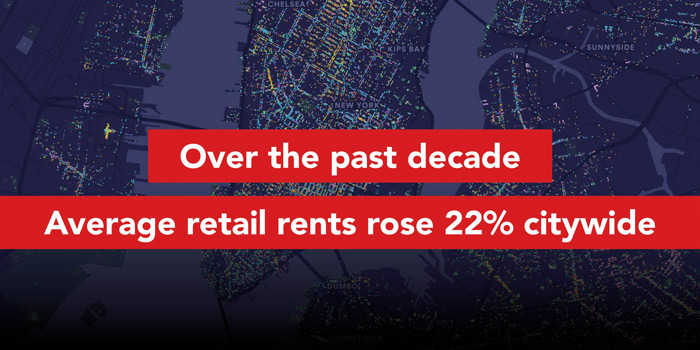Photo Courtesy of Comptroller Stringer’s Office
By Michael V. Cusenza
While retail vacancy rates have risen across all five boroughs, the highest vacancy rate neighborhoods lie in Queens and Staten Island, according to a recently released report by City Comptroller Scott Stringer.
The facts and figures in “Retail Vacancy in New York City: Trends and Causes, 2007-2017,” indicate that the borough communities with the most vacant square-footage include Jamaica, Elmhurst, Little Neck, Jackson Heights, and Cambria Heights.
According to Stringer’s analysis, despite Gotham’s continued economic expansion, the rate of empty and vacant storefronts across the five boroughs has skyrocketed by nearly 50 percent over the past decade, rising to a high of 5.8 percent in 2017. Using never-before analyzed data, the comptroller’s new report found that the dramatic rise of retail vacancy citywide—which doubled to over 11 million square-feet between 2007 and 2017—has been fueled by the growth in online shopping, rising commercial rents, and regulatory hurdles. The rise of online retail in particular has dramatically reshaped the mix of Big Apple retail space away from traditional stores in favor of service-oriented establishments such as restaurants, barbers, and exercise studios, contributing to the growing vacancy trend as landlords, retailers—and the City bureaucracy—struggle to adjust.
To address what Stringer has characterized as “the growing retail vacancy crisis,” and support small-business growth at the heart of NYC’s economy, Stringer laid out a series of recommendations, including:
Provide tax incentives for independent merchandise retailers in high-vacancy retail corridors. The City should provide tax credits for independent retailers to help lower the cost of space in retail corridors with persistently high vacancy rates, Stringer suggested.
Create single point-of-contact customer service for businesses occupying retail space. In order to expedite and facilitate a change in use of retail space from goods to personal services or an eating or drinking establishment, Stringer said the City should create a multi-agency task force staffed with single point-of-contact customer service representatives to assist new businesses by coordinating and expediting the necessary regulatory actions. The City should also waive permitting and inspection fees for businesses taking over existing space that has been vacant for a given period of time, the comptroller offered.
Incorporate retail demand into neighborhood planning. Stringer said the City should require an analysis of retail demand in any major development proposal or rezoning, to ensure that the right amounts and types of retail space are incorporated into the planning process.
“Change is the one constant in New York City—and sometimes, change can be overwhelming. Even as our economy has grown, many mom-and-pop stores have been left behind, transforming spaces once owned by local small businesses into barren storefronts,” Stringer added. “This isn’t just about empty buildings and neighborhood blight, it’s about the affordability crisis in our city. We need to use every tool in the box to tackle affordability, support small businesses and ensure New Yorkers are equipped to succeed in the new economic reality.”

